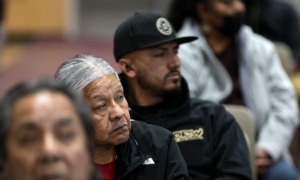 |
Selcuk R. Sirin, Michelle Fine
New York University Press
243 pages. $70 ($23 paperback).
To discover how the post-9/11 atmosphere affects diverse American-born young Muslims with roots in more than 100 countries, psychologists Sirin and Fine designed a study, with the help of a teen advisory group. Using surveys, focus groups and interviews, they examined 204 respondents in two age groups: 12 to 18 and 18 to 25. Subjects created identity maps to visually express mixed identities. For example, Faridah drew a tree with roots and trunk labeled “Islam.” Leafy sections show emotions and roles such as sister and student. Each part of the tree is color-coded “Pakistani me, American me” or a blend.
These maps reveal three identity types. The majority integrate religious, cultural and national identities and try to explain Muslim ways to others. Most of the rest separate their multiple identities in parallel worlds, revealing little to outsiders. A few experience conflicted identities. All describe discrimination from non-Muslims and the U.S. government, ranging from name-calling to shunning, from profiling in airports to phone-tapping and threats of deportation. These practices might turn “a generation of engaged teens into young adults at risk of becoming more alienated … and more marginal exiles in their homeland, the United States,” warn Sirin and Fine.
With heart and eloquence, the authors illuminate vital concerns about our society’s treatment of Muslim-American youth. (800) 996-6987, http://www.nyupress.org.






























